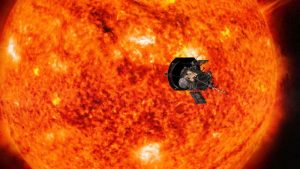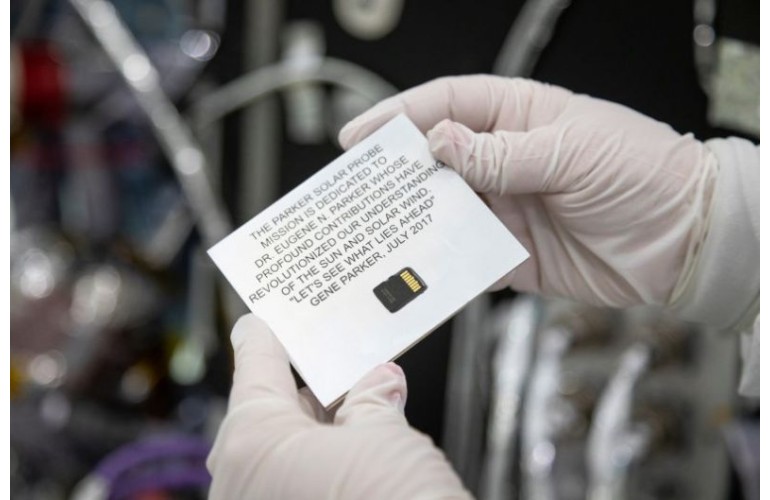 Subscribe
Subscribe- Login
-
/
Sign Up
- US Black Engineer
- >>
- Articles
- >>
- A million names headed to the Sun
|
Getting your Trinity Audio player ready...
|

In March 2018, Americans were invited to send names to the Sun aboard humanity’s first mission to “touch” a star. Over seven and a half weeks, NASA received a total of 1,137,202 names.
A memory card holding the names was installed on the spacecraft on May 18, 2018, three months before the scheduled launch on July 31, from NASA’s Kennedy Space Center in Florida. The card was mounted on a plaque bearing a dedication to and a quote from the mission’s namesake, Eugene Parker, who first theorized the existence of the solar wind. The memory card also carries a copy of Parker’s groundbreaking 1958 scientific paper.
Parker, a professor emeritus at the University of Chicago, proposed a number of concepts about how stars — including our Sun — give off material. He called this cascade of energy and particles the solar wind, a constant outflow of material from the Sun that we now know shapes everything from the habitability of worlds to our solar system’s interaction with the rest of the galaxy.
Though our understanding of the Sun and the solar wind has vastly improved since Parker first theorized the solar wind, there are still questions left unanswered.
“Parker Solar Probe is going to revolutionize our understanding of the Sun, the only star we can study up close,” said Nicola Fox, project scientist for Parker Solar Probe at the Johns Hopkins Applied Physics Lab in Laurel, Maryland. “It’s fitting that as the mission undertakes one of the most extreme journeys of exploration ever tackled by a human-made object, the spacecraft will also carry along the names of so many people who are cheering it on its way.”
A commemorative reproduction of the plaque bearing an identical memory card — minus the submitted names — was presented to Parker at the Johns Hopkins University Applied Physics Lab in October 2017 by the mission team.
“From the experience of seeing the probe up close, I understand now the difficult task you are undertaking, and I am sure you will succeed,” said Parker after visiting the spacecraft in the cleanroom.
NASA’s Parker Solar Probe will swoop through the Sun’s atmosphere 24 times. Throughout its seven-year mission, the spacecraft will explore the Sun’s outer atmosphere and make critical observations to answer decades-old questions about the physics of stars. The resulting data may also improve forecasts of major eruptions on the Sun and subsequent space weather events that impact life on Earth, as well as satellites and astronauts in space.


